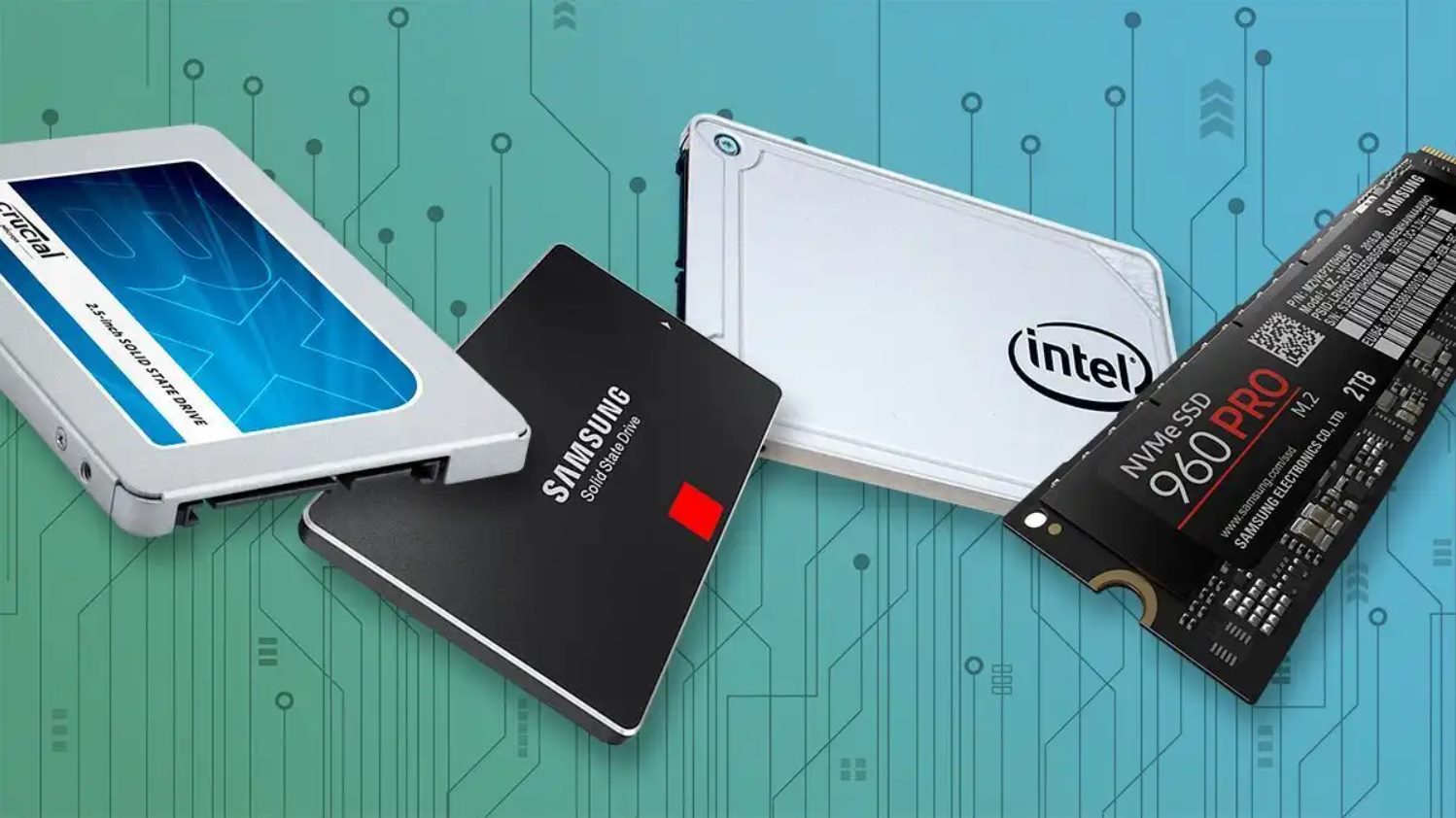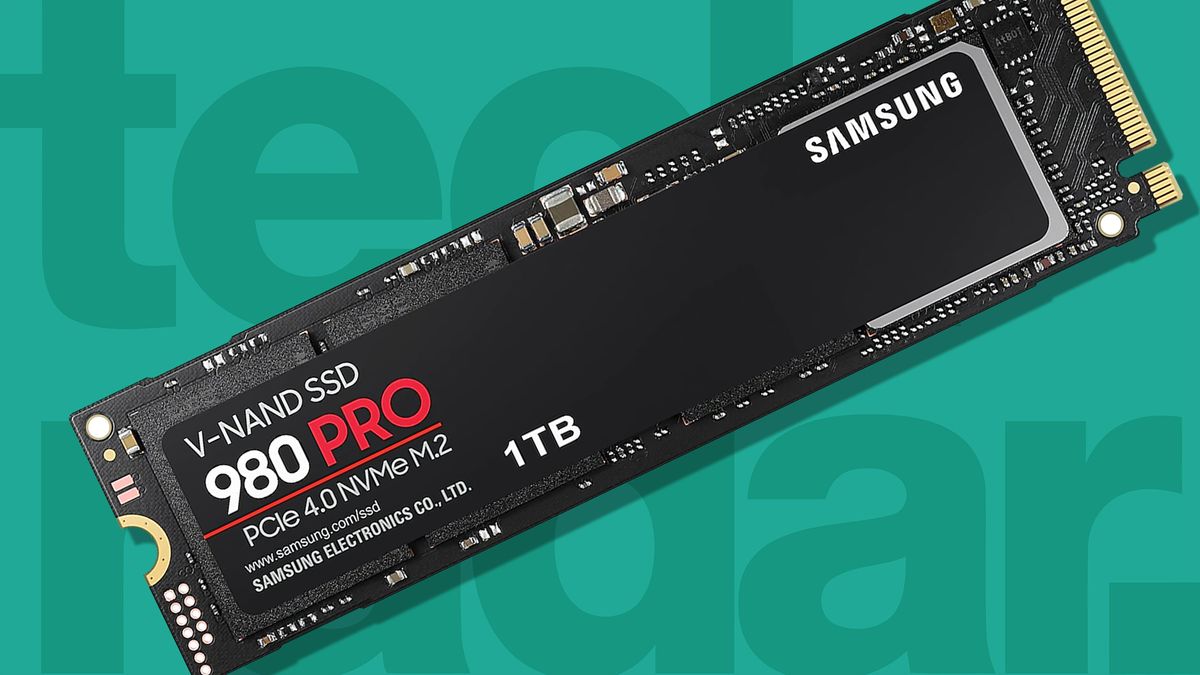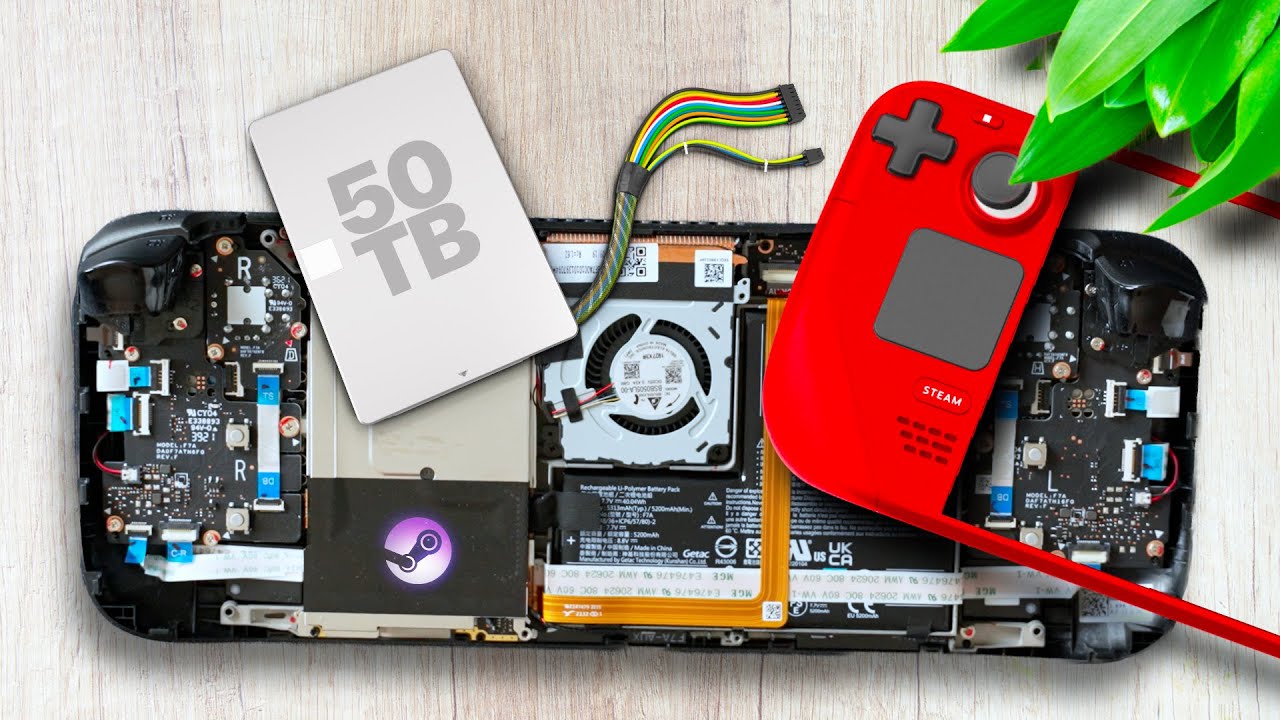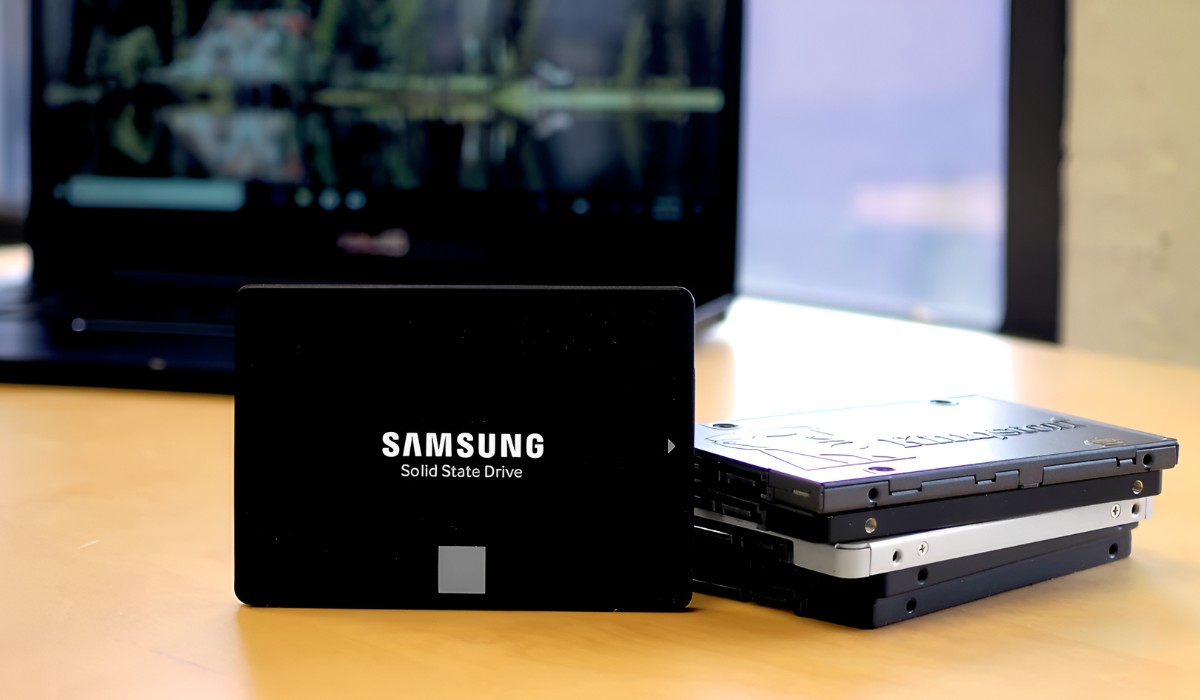Introduction
Welcome to our guide on the Steam Deck, a revolutionary handheld gaming device developed by Valve Corporation. With its powerful hardware and portable design, the Steam Deck promises to offer a console-like gaming experience on the go. In this article, we will be focusing on one key component of the Steam Deck, namely the solid-state drive (SSD) that it utilizes.
As gaming technology continues to evolve, the importance of storage solutions cannot be underestimated. The SSD plays a crucial role in ensuring smooth and efficient gameplay, reducing load times, and providing ample space for game installations. Understanding the specific SSD specifications of the Steam Deck can help potential users make informed decisions and optimize their gaming experience.
Join us as we delve into the details of the Steam Deck’s SSD, exploring its specifications, storage capacity options, performance, and whether or not it is upgradeable. By the end of this article, you will have a comprehensive understanding of the SSD utilized by the Steam Deck and its impact on your gaming sessions.
What is the Steam Deck?
The Steam Deck is a handheld gaming device developed by Valve Corporation, the creators of the popular digital distribution platform Steam. It is designed to offer a portable gaming experience that rivals traditional gaming consoles. The device features a built-in controller layout with a large touchscreen display, allowing gamers to play their favorite PC games anywhere, anytime.
At its core, the Steam Deck is essentially a portable PC that runs on Valve’s SteamOS operating system. It offers a wide range of PC gaming capabilities, including access to thousands of games from the extensive Steam library, as well as the ability to install other PC game clients such as Epic Games Store, GOG, and more. This means that users can play not only Valve’s own games but also titles from other popular game developers and platforms.
With the Steam Deck, gamers no longer need to be tied to a desktop or a laptop to enjoy their favorite games. The handheld device is equipped with a powerful custom APU developed by AMD, ensuring that it can handle demanding games with ease. It also includes a selection of physical buttons, including analog sticks, D-pads, and triggers, to provide a familiar and comfortable gaming experience.
The Steam Deck aims to bridge the gap between console and PC gaming by offering the convenience of a handheld device without sacrificing performance or game availability. It allows gamers to take their entire PC gaming library on the go, making it a compelling option for those who want to enjoy high-quality gaming outside the confines of their home.
Why is the SSD important?
The solid-state drive (SSD) is a crucial component of the Steam Deck that greatly influences its overall performance and user experience. Unlike traditional hard disk drives (HDDs), SSDs utilize flash memory technology to store data, resulting in significantly faster access times and data transfer rates. Here are several reasons why the SSD is important in the context of the Steam Deck:
- Improved Load Times: The faster read and write speeds offered by SSDs drastically reduce loading times in games. This means that gamers can jump into their favorite games without enduring long and frustrating wait times. Quick and seamless loading is essential for an enjoyable gaming experience, and the SSD plays a pivotal role in facilitating this.
- Smooth Gameplay: The Steam Deck’s SSD ensures that game data can be quickly accessed, allowing for smooth and responsive gameplay. Whether it’s rendering complex graphics, loading large game environments, or executing in-game actions, the SSD’s high-speed performance helps minimize lag and ensures a fluid gaming experience.
- Quick Game Storage: With an SSD, game installations and updates are significantly faster compared to HDDs. This means that users can quickly install new games or add additional content to existing ones without having to wait for an extended period. The speed of the SSD allows gamers to easily manage their library and access their favorite titles without delay.
- Reliability and Durability: SSDs have no moving parts, making them more resistant to physical shock and less prone to failure. This is especially important for a portable gaming device like the Steam Deck, which may be subject to rough handling or accidental drops. The increased durability of SSDs ensures that gamers can rely on their device for uninterrupted gameplay.
- Reduced Power Consumption: SSDs are more energy-efficient compared to HDDs, which can have a positive impact on battery life. By utilizing an SSD, the Steam Deck can provide longer playtime on a single charge, allowing gamers to enjoy extended gaming sessions without having to worry about frequent recharging.
In summary, the SSD is a vital component of the Steam Deck, providing faster load times, smoother gameplay, quick storage access, enhanced reliability, and improved power efficiency. Its impact on the overall gaming experience cannot be understated, making it essential for gamers who prioritize performance and convenience.
Steam Deck SSD Specifications
The Steam Deck utilizes a high-performance solid-state drive (SSD) to deliver fast and efficient storage for your gaming needs. The SSD specifications of the Steam Deck are as follows:
NVMe PCIe 3.0 x4 Interface: The Steam Deck features a NVMe (Non-Volatile Memory Express) SSD with a PCIe (Peripheral Component Interconnect Express) 3.0 x4 interface. This interface provides a fast and direct connection between the SSD and the system, enabling quick data transfer speeds and low latency.
Storage Capacity Options: The Steam Deck offers different storage capacity options to cater to various gaming preferences and needs. Users can choose between 64GB eMMC, 256GB NVMe SSD, 512GB NVMe SSD, and 1TB NVMe SSD. These options provide ample space to store your games, game saves, and other media.
Performance and Speed: The SSD in the Steam Deck is designed to deliver impressive performance and speed. With the NVMe PCIe 3.0 x4 interface, it can achieve significantly faster read and write speeds compared to traditional hard disk drives (HDDs). This translates into reduced loading times and faster data access, enhancing your gaming experience.
Reliable and Durable: The SSD in the Steam Deck is built with reliability and durability in mind. Unlike HDDs, which have mechanical parts that can be susceptible to failure, SSDs are more resistant to shocks and vibrations. This ensures that your gaming data remains safe and accessible, even during moments of physical impact or movement.
Upgradeability: While the Steam Deck offers different storage capacity options, it’s worth noting that the SSD is not easily user-replaceable or upgradeable. Therefore, it’s important to choose the suitable storage capacity for your needs when purchasing the device.
The combination of a high-speed NVMe PCIe 3.0 x4 interface, ample storage capacity options, and the reliability of an SSD makes the Steam Deck well-equipped to handle the demands of modern gaming. Whether you prefer a smaller capacity for quick gaming sessions or require more extensive storage for a larger gaming library, the SSD options available in the Steam Deck offer flexibility and performance to suit your gaming needs.
NVMe PCIe 3.0 x4 Interface
One of the standout features of the Steam Deck’s solid-state drive (SSD) is its NVMe (Non-Volatile Memory Express) PCIe (Peripheral Component Interconnect Express) 3.0 x4 interface. This cutting-edge technology contributes to the device’s impressive performance and fast data transfer speeds. Let’s take a closer look at what the NVMe PCIe 3.0 x4 interface brings to the table.
High-Speed Data Transfer: The NVMe PCIe 3.0 x4 interface provides a significant boost in data transfer rates compared to previous-generation interfaces like SATA (Serial Advanced Technology Attachment). It allows for faster communication between the SSD and the system, resulting in enhanced overall performance. This means that tasks such as game loading, installation, and access to game files are expedited, minimizing wait times and maximizing gaming efficiency.
Reduced Latency: The NVMe protocol used in the Steam Deck’s SSD significantly reduces latency, or the time it takes for the system to read and write data. This reduced latency is especially crucial in gaming, where real-time responsiveness is essential. It ensures that actions performed in games are registered and executed swiftly, providing a seamless and immersive gaming experience.
In summary, the NVMe PCIe 3.0 x4 interface utilized by the Steam Deck’s SSD offers high-speed data transfer, reduced latency, scalability for future upgrades, gaming optimization, and energy efficiency. This advanced interface plays a critical role in delivering an exceptional gaming experience on the Steam Deck, ensuring fast and seamless performance for gaming enthusiasts.
Storage Capacity Options
The Steam Deck offers a range of storage capacity options to accommodate the varying needs and preferences of gamers. These options provide users with flexibility in terms of the amount of game data they can store on the device. Let’s explore the storage capacity options available on the Steam Deck:
- 64GB eMMC: The 64GB eMMC (embedded MultiMediaCard) option provides a compact storage solution suitable for users who have a smaller collection of games or intend to primarily play lighter, less demanding titles. While it offers limited storage space compared to the other options, the eMMC storage offers a cost-effective entry point for those on a budget.
- 256GB NVMe SSD: The 256GB NVMe (Non-Volatile Memory Express) SSD is a mid-tier option that provides a balance between storage capacity and affordability. It offers ample space for several modern games, allowing users to comfortably store and access their favorite titles without constantly juggling installations.
- 512GB NVMe SSD: The 512GB NVMe SSD option increases the storage capacity, providing even more room to install and store a larger collection of games. This option is suitable for gamers who prefer having a wider variety of games readily available on their Steam Deck without having to rely on external storage solutions.
- 1TB NVMe SSD: For those with vast gaming libraries or a need for extensive storage space, the 1TB NVMe SSD option is the top-tier choice. With this option, users can install and store a significant number of games, along with additional media such as videos, music, and game captures. It offers the most expansive storage capacity on the Steam Deck, ensuring that users have ample space for their gaming needs.
It’s important to consider your gaming habits, preferences, and the size of your game library when selecting the storage capacity option for your Steam Deck. While the eMMC and 256GB options may suffice for some users, those with larger game collections or a desire for future expansion may find the 512GB or 1TB options more suitable.
Furthermore, it’s worth noting that all storage capacity options of the Steam Deck use solid-state drives (SSDs). SSDs provide faster data access and transfer speeds compared to traditional hard disk drives (HDDs), resulting in quicker load times, improved overall performance, and a smoother gaming experience.
Ultimately, the storage capacity options available on the Steam Deck allow users to choose the option that best meets their storage requirements, providing the freedom to have their preferred games accessible at all times without compromise.
Performance and Speed
When it comes to gaming, performance and speed are paramount. The solid-state drive (SSD) used in the Steam Deck plays a crucial role in delivering optimal performance and enhancing the gaming experience. Let’s explore how the SSD contributes to the overall performance and speed of the Steam Deck:
Faster Load Times: The use of an SSD in the Steam Deck ensures significantly faster load times compared to traditional hard disk drives (HDDs). Games installed on the SSD are accessed and loaded quickly, allowing gamers to jump into their favorite titles without enduring long loading screens. This improvement in load times enhances the overall gaming experience by minimizing wait times and keeping players engaged and immersed in their games.
Swift Game Installations: Installing games on the Steam Deck’s SSD is a breeze. The fast read and write speeds of the SSD make the installation process quick and efficient, saving users valuable time. With fewer delays in game installations, gamers can spend more time playing and less time waiting for games to be ready.
Efficient Data Access: The latency of accessing game data is reduced with the use of an SSD. The Steam Deck’s SSD ensures that game assets, textures, and other data are retrieved rapidly, enabling smooth and responsive gameplay. This seamless data access ensures that gamers experience minimal lag or delays, resulting in an immersive and enjoyable gaming session.
Seamless Asset Streaming: The high-speed performance of the SSD aids in streaming game assets seamlessly. In open-world games or titles with vast environments, the SSD’s ability to quickly retrieve and stream assets ensures a smooth transition between game areas, reduced pop-in, and enhanced visual fidelity. This contributes to a more immersive and realistic gaming experience.
Reduced Game Stuttering: The Steam Deck’s SSD assists in minimizing game stuttering and frame rate drops. By swiftly retrieving data from the SSD, the system can process and deliver the required game assets more efficiently. This results in smoother gameplay with fewer instances of frame freezes or stutters, allowing gamers to fully enjoy their games without interruption.
Overall System Responsiveness: The SSD enhances the overall responsiveness of the Steam Deck. The quick read and write speeds of the SSD ensure that the system responds promptly to user inputs, such as launching applications and navigating menus. This snappy system responsiveness contributes to a more fluid and enjoyable user experience.
The performance and speed benefits brought by the SSD in the Steam Deck make a noticeable difference in the gaming experience. Whether it’s faster load times, efficient data access, seamless asset streaming, reduced stuttering, or overall system responsiveness, the SSD ensures smooth and enjoyable gameplay on the Steam Deck.
Is the SSD Upgradeable?
One question that often arises when considering the storage options of a device is whether the solid-state drive (SSD) is upgradeable. In the case of the Steam Deck, while the device offers different storage capacity options, it’s important to note that the SSD itself is not easily replaceable or upgradeable by the user.
The storage on the Steam Deck is integrated into the device’s design, and the SSD is soldered onto the motherboard. This means that the SSD cannot be easily removed or swapped out for a different one. Therefore, it’s crucial to consider your storage needs and choose the appropriate storage capacity option when purchasing the Steam Deck.
However, Valve Corporation, the developers of the Steam Deck, do offer different storage capacity options to cater to a variety of gaming requirements. These options range from 64GB eMMC to 256GB, 512GB, and even 1TB NVMe SSDs. By providing a range of storage capacities, Valve aims to accommodate different users’ needs and preferences directly from the point of purchase.
While the inability to upgrade the SSD may initially seem limiting, it’s important to consider that the storage options available on the Steam Deck are already robust and suitable for many gamers. The provided storage capacities offer ample space for game installations, save files, and additional media.
Moreover, the use of high-performance NVMe SSD technology ensures fast read and write speeds, contributing to quick game installations, reduced loading times, and improved overall performance. Therefore, though the SSD is not upgradeable, the available storage options provide a solid foundation for an excellent gaming experience on the Steam Deck.
Considering your gaming habits, preferences, and the size of your game library when choosing the storage capacity of your Steam Deck will help ensure that you have sufficient storage for your needs. Additionally, leveraging external storage solutions, such as microSD cards or portable SSDs, can extend the available storage space for those with larger game collections or evolving storage requirements.
Overall, while the SSD on the Steam Deck is not upgradeable, the range of storage capacity options and the performance of the built-in SSD ensure that users have a suitable storage solution to enjoy their gaming experiences without compromise.
Conclusion
The solid-state drive (SSD) utilized by the Steam Deck plays a critical role in delivering an exceptional gaming experience on the handheld device. With its high-speed performance, efficient data access, and faster load times, the SSD enhances gameplay, reduces delays, and ensures a seamless gaming experience. The NVMe PCIe 3.0 x4 interface of the SSD offers impressive data transfer rates and low latency, contributing to improved overall performance.
The availability of different storage capacity options allows users to choose the option that best suits their gaming requirements. Whether it’s the compact 64GB eMMC option for lighter games or the larger 1TB NVMe SSD for extensive gaming libraries, the storage capacity options provide flexibility and ample space for game installations and media storage.
Although the SSD on the Steam Deck is not upgradeable, the provided storage options, combined with the high-performance capabilities of the built-in SSD, offer a reliable and efficient storage solution for gamers. It’s essential to select the appropriate storage capacity based on your gaming habits, preferences, and library size to ensure a satisfying experience.
Overall, the Steam Deck’s SSD significantly contributes to the device’s speed, performance, and overall responsiveness. Whether you’re a casual gamer or a dedicated gaming enthusiast, the SSD’s fast load times, seamless asset streaming, and reduced game stuttering will elevate your gaming experience on the Steam Deck.
With its portable design, powerful hardware, and the impressive capabilities of the SSD, the Steam Deck stands as an enticing choice for gamers who want to enjoy high-quality PC gaming on the go. The combination of gaming mobility and optimal storage performance make the Steam Deck a compelling option in the handheld gaming market.
As technology continues to evolve, the SSD remains integral to the overall gaming experience by providing improved performance, faster load times, and efficient data access. The Steam Deck’s SSD ensures that gamers can enjoy their favorite titles with minimal delays or interruptions, allowing them to immerse themselves fully in the world of gaming, anytime and anywhere.

























